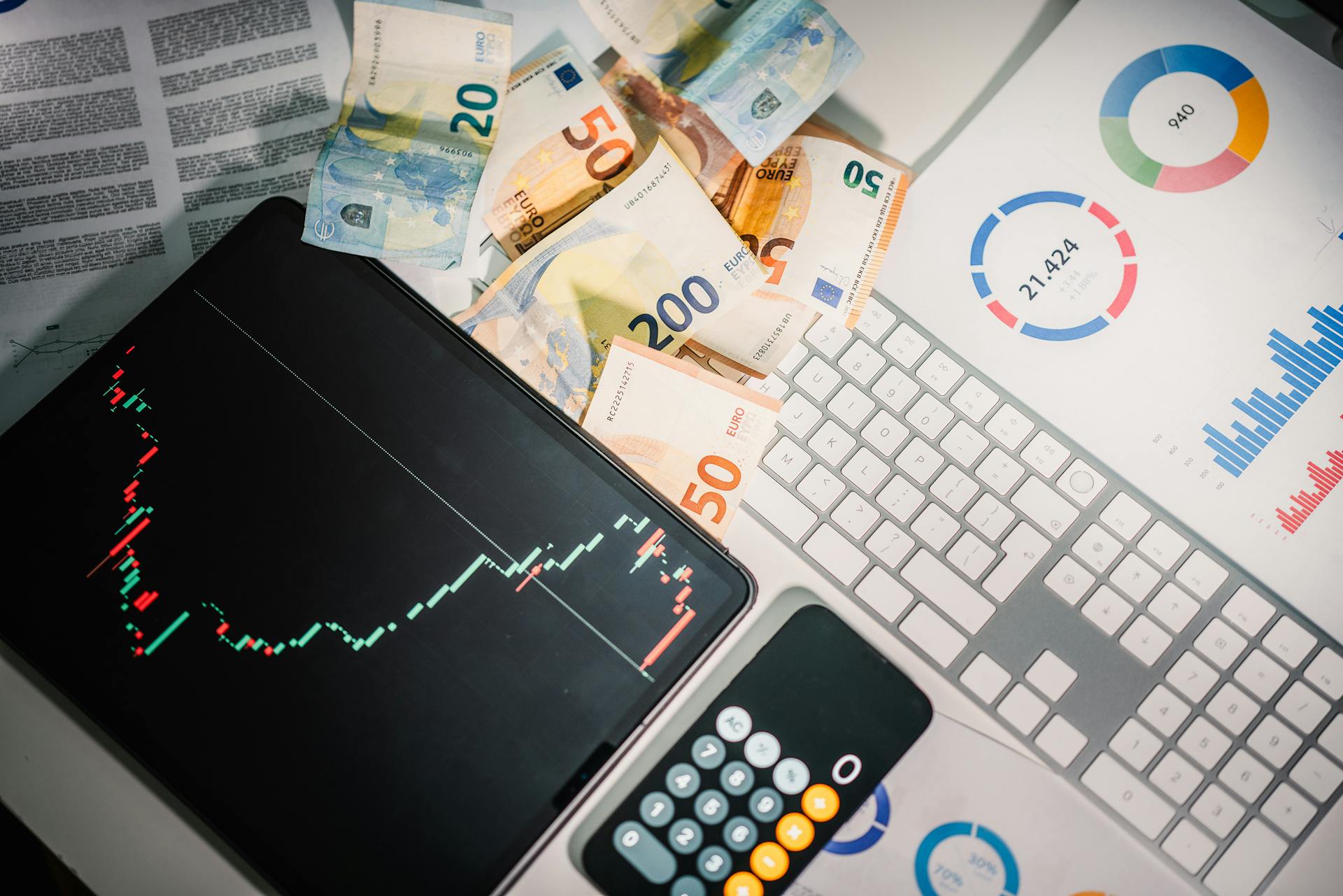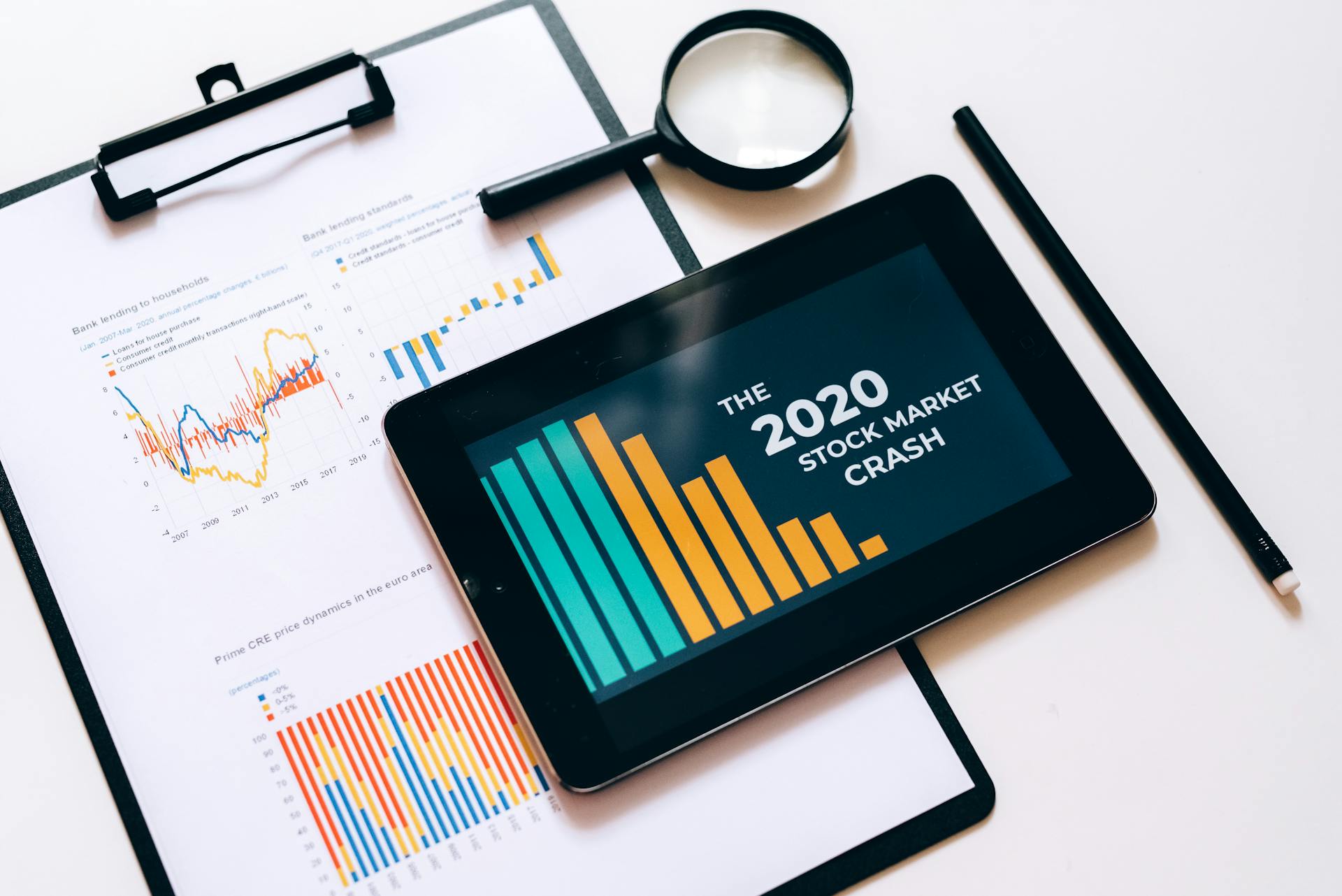
Stock buybacks can be a powerful tool for companies looking to boost their stock prices and reward shareholders. Companies can use excess cash to repurchase their own shares, reducing the number of outstanding shares and potentially increasing the value of each remaining share.
In the United States, stock buybacks are subject to certain rules and regulations. The Securities and Exchange Commission (SEC) requires companies to disclose their buyback plans and intentions in their public filings.
Companies must also consider the impact of buybacks on their financial statements, including the potential effects on earnings per share (EPS) and cash flow. A company with a large buyback program may see a significant increase in EPS, but this can also lead to a decrease in cash reserves.
The SEC also requires companies to disclose the total amount of shares repurchased and the average price paid per share. This information is essential for investors to understand the true impact of buybacks on a company's financial health.
You might like: Brk.b Shares Outstanding
Stock Buybacks Explained
Stock buybacks are a way for companies to re-invest in themselves by buying back their own shares from the marketplace.
A company can buy back its shares through a tender offer or the open market. The tender offer allows corporate shareholders to submit their shares for repurchase, while buying back shares on the open market is often done at the market price.
The announcement of a buyback can cause the share price to increase as the market perceives it as a positive signal. This is because the relative ownership stake of each investor increases when there are fewer shares on the market.
There are two main ways a company can conduct a buyback: through a tender offer or the open market. Here are the details on each method:
- Tender Offer: This involves corporate shareholders receiving a tender offer to submit their shares for repurchase. Investors then state how many shares they want to tender and the price they're willing to accept.
- Open Market: In this case, the company buys its shares on the open market at the market price.
Types of Stock Buybacks
There are several types of stock buybacks, each with its own unique characteristics.
A company may buy back shares held by employees or directors through an "employee share scheme buyback", which requires an ordinary resolution.
Open-market stock repurchases are the most common method in the United States, accounting for almost 95% of all repurchases.
A firm will announce its intention to repurchase shares in the open market and decide when and how much to repurchase, with daily buyback limits restricting the amount of stock that can be bought.
According to SEC Rule 10b-18, the issuer cannot purchase more than 25% of the average daily volume.
Accelerated share repurchases (ASRs) allow companies to repurchase a large chunk of their publicly traded equity shares, often with the help of specialized investment banks.
In an ASR, the company typically makes an upfront payment to the bank, which then borrows the company's shares in the market and delivers them to the company.
A fixed-price tender offer specifies a single purchase price, the number of shares sought, and the duration of the offer, with public disclosure required.
The purchase price is determined by the number of shares tendered, with the company purchasing less than all shares tendered at the purchase price on a pro rata basis to all who tendered at the purchase price.
Suggestion: Adobe Share Repurchase
A Dutch auction offer specifies a price range within which the shares will ultimately be purchased, with the company paying the lowest price that allows it to buy the number of shares sought in the offer.
The company pays that price to all investors who tendered at or below that price, with the purchase price determined by the demand curve for the stock.
Other Types of Share Repurchases
Companies can buy back shares through various methods, each with its own requirements and benefits. An employee share scheme buyback, for instance, requires an ordinary resolution and is used to repurchase shares held by employees or salaried directors.
A listed company may also buy back its shares in on-market trading on the stock exchange, following the passing of an ordinary resolution if over the 10/12 limit. This type of buyback is subject to the stock exchange's rules, known as "on-market buybacks".
Companies can also buy unmarketable parcels of shares from shareholders, referred to as a "minimum holding buyback". This type of buyback does not require a resolution, but the purchased shares must still be canceled.
A different take: Stock Exchange
Privately Negotiated Repurchases
Privately negotiated share repurchases allow companies to repurchase a sizable amount of their shares quickly. This method involves entering into share purchase agreements with individual shareholders.
Companies may consider privately negotiated repurchases to effect a share repurchase, but they typically are limited to a few sellers due to significant administration expenses and potential illegal tender offer concerns.
Like all share repurchase programs, privately negotiated transactions are subject to Rule 10b-5's prohibitions on repurchases made while in possession of material nonpublic information.
Sellers often provide representations and warranties about their financial sophistication and knowledge about the company, and may also waive certain claims against the company in connection with a sale.
Privately negotiated repurchases are not eligible for the Rule 10b-18 safe harbor, as noted in a no-action letter from the SEC.
Here's an interesting read: Rule 144 Restricted Stock
Issuer Tender Offers
Companies often buy back shares to maximize value for their shareholders, especially when they have excess capital.
Prior to 1981, all tender offer repurchases were executed using a fixed-price tender offer. This type of offer specifies a single purchase price, the number of shares sought, and the duration of the offer, with public disclosure required.
Shareholders decide whether or not to participate in a fixed-price tender offer, and if so, the number of shares to tender to the firm at the specified price. Officers and directors are frequently precluded from participating in tender offers.
If the number of shares tendered exceeds the number sought, the company purchases less than all shares tendered at the purchase price on a pro rata basis to all who tendered at the purchase price.
For more insights, see: Bond Tender Offer
Other Types
Companies can buy back shares in various ways beyond the traditional accelerated share repurchase (ASR) strategy. An ordinary resolution is required for a company to buy back shares held by or for employees or salaried directors of the company or a related company, known as an "employee share scheme buyback".
This type of buyback is a bit different from ASR, as it doesn't involve a forward contract with an investment bank. Instead, the company directly buys back the shares from employees or directors.
Discover more: Share Buyback Rules
A listed company may also buy back its shares in on-market trading on the stock exchange, following the passing of an ordinary resolution if over the 10/12 limit. This type of buyback is subject to the stock exchange's rules, known as "on-market buybacks".
Additionally, a listed company may buy unmarketable parcels of shares from shareholders, referred to as a "minimum holding buyback". This type of buyback doesn't require a resolution, but the purchased shares must still be canceled.
Here's a quick summary of the different types of buybacks:
How Stock Buybacks Work
A stock buyback is a way for a company to re-invest in itself by buying back its shares from the marketplace with its accumulated cash.
There are two main ways companies conduct a buyback: through a tender offer or the open market. A tender offer is when corporate shareholders receive a request to submit a portion or all of their shares within a certain time frame.
The tender offer states the number of shares the company wants to repurchase along with a price range for the shares. Investors who accept state how many shares they want to tender along with the price they are willing to accept.
The company then finds the right mix to buy the shares at the lowest cost. In contrast, buying shares on the open market is often the case, but the announcement of a buyback causes the share price to shoot up because the market perceives it as a positive signal.
Here are the two methods of conducting a buyback:
- Tender Offer: This involves a tender offer to corporate shareholders.
- Open Market: This involves buying shares on the open market at the market price.
By buying back shares, a company reduces the number of outstanding shares on the market, which increases the relative ownership stake of each investor.
Disclosure and Compliance
Domestic issuers are required to file daily repurchase data on a quarterly basis in an exhibit to their Form 10-Q and Form 10-K. This data includes the class of shares purchased, the average price paid per share, and the total number of shares purchased.
Additional reading: A Perpetuity a Special Form of Annuity Pays Cash Flows
Foreign private issuers, on the other hand, will be required to disclose the daily repurchase data in new Form F-SR, which must be filed within 45 days after the end of their fiscal quarter. They can also incorporate by reference the related Form 6-K disclosures into their Form F-SR, but this does not eliminate the need to file the new form.
A domestic issuer will be required to comply with all of the new requirements on a quarterly basis in Forms 10-Q and 10-K starting with the first filing that covers the first full fiscal quarter that begins on or after October 1, 2023. A foreign private issuer will be required to comply with the tabular repurchase and checkbox disclosures on a quarterly basis in Form F-SR starting with the Form F-SR that covers the first full fiscal quarter that begins on or after April 1, 2024.
The new rules also require issuers to disclose the following in their periodic reports:
- the objectives or rationales for the company's share repurchases and the process or criteria used to determine the amount of repurchases
- any policies and procedures relating to purchases and sales of the company's securities during a repurchase program by the company's officers and directors
In addition, issuers must disclose the date each repurchase plan or program was announced, the dollar amount (or number of shares) approved, the expiration date (if any) of each plan or program, and each plan or program that has expired during the period covered in the tabular disclosure.
A unique perspective: Columbia Venture Capital Private Equity Program
Share Repurchase Disclosure Requirements
Share repurchase disclosure requirements have changed, and companies must now disclose more information about their share repurchases. This is a significant development for investors and regulators alike.
Under current rules, companies are required to disclose information about stock buybacks in their quarterly and annual reports aggregated on a monthly basis. However, the new rules require a company to provide tabular disclosure on a quarterly basis of its daily repurchase activity.
The new rules require companies to disclose the following information about their daily repurchase activity:
- The class of shares purchased
- The average price paid per share
- The total number of shares purchased (including the total number purchased as part of a publicly announced plan)
- The aggregate maximum number of shares (or dollar value) that may still be purchased under a publicly announced plan
- The total number of shares purchased on the open market
- The total number of shares purchased intended to qualify for a Rule 10b5-1 trading plan and (separately) the total number of shares purchased intended to qualify for the Rule 10b-18 safe harbor
Companies must also disclose in a footnote to the daily repurchase table the date on which any Rule 10b5-1 plan was adopted or terminated.
Domestic issuers will be required to file the daily repurchase data on a quarterly basis in an exhibit to their Form 10-Q and Form 10-K (for their fourth fiscal quarter). Foreign private issuers will be required to disclose the daily repurchase data in new Form F-SR, required to be filed within 45 days after the end of their fiscal quarter.
Here is a summary of the key changes:
Compliance Dates
Compliance dates are crucial for SEC registrants to keep in mind. Domestic issuers will be required to comply with the new requirements on a quarterly basis in Forms 10-Q and 10-K.
A domestic issuer will be required to comply with the amendments on Forms 10-Q and 10-K beginning with the first filing that covers the first full fiscal quarter that begins on or after October 1, 2023. This means a calendar year company will need to comply starting with the Form 10-K filed in 2024.
A different take: Net Income and Cash Flow from Operating Activities Will
Foreign private issuers, on the other hand, will be required to comply with the amendments on a quarterly basis in Form F-SR starting with the first full fiscal quarter that begins on or after April 1, 2024. For a calendar year company, this will be the Form F-SR relating to the second quarter of 2024 filed in August 2024.
Here's a quick summary of the compliance dates for both domestic and foreign private issuers:
- Domestic issuer: First filing that covers the first full fiscal quarter that begins on or after October 1, 2023
- Foreign private issuer: First full fiscal quarter that begins on or after April 1, 2024 (for quarterly filings in Form F-SR)
- Foreign private issuer (expanded buyback narrative disclosure): First Form 20-F filed after the foreign private issuer's first Form F-SR has been filed (for a calendar year company, the Form 20-F filed in 2025)
Comparison and Impact
Share buybacks can be a more efficient way to return capital to shareholders, as taxes are only triggered once the shareholder sells the shares. This is a key advantage over dividends, which are taxed at ordinary income tax rates when received.
The tax treatment of share buybacks has recently changed with the introduction of an excise tax of 1% on repurchases valued at over $1 million, as of December 31, 2022. This new rule was included in the Inflation Reduction Act of 2022, signed into law by President Joe Biden.
Prior to this, corporations generally weren't taxed at all if they repurchased their shares and boosted value for their shareholders. This tax treatment is contrary to that of dividends, which are taxed at ordinary income tax rates when received.
Additional reading: Commercial Mortgages Rates
Share Buybacks vs Dividends
Share buybacks and dividends are two popular ways for companies to return value to their shareholders. Share buybacks reduce the number of shares outstanding, which can increase return on assets (ROA) and return on equity (ROE).
In contrast, dividends are taxed as ordinary income when received, unlike share buybacks which don't incur additional tax until the shares are sold. This makes share buybacks a more efficient way to return capital to shareholders.
A share buyback can also have the opposite effect of dilution, which is often caused by generous employee stock option plans (ESOP). If a company exercises stock options, it can increase the number of shares outstanding, weakening the financial appearance of the company.
Here's a comparison of share buybacks and dividends:
The Inflation Reduction Act of 2022 introduced an excise tax of 1% on share buybacks, which may change the landscape for companies considering share buybacks.
Expand your knowledge: Common Share Equity
Economic Impact
Repurchases account for a small fraction of the trading volume in a typical stock, making their price impact too small to generate short-term price manipulation.
The short-term price increase after buybacks is modest, and it doesn't reverse on average.
This modest price increase suggests that repurchases don't have a significant impact on the overall market.
Here's an interesting read: Small Business Cash Flow Problems
Criticism

Criticism has been leveled against share repurchases since the 1970s, when the Securities and Exchange Commission determined that a large volume of stock buybacks could manipulate the market.
Rule 10b-18 has been criticized for leaving stock repurchases virtually unregulated.
Stock buyback programs are considered one of the drivers of an imbalanced economy, where corporate profits and shareholder payments continue to grow while wages for typical workers stay flat.
Executive compensation is often affected by share buybacks, with some rewards tied to targets on share price or earnings per share.
The reduction in the number of shares due to buybacks causes the share price to increase more than the market capitalization of the company.
This has led to misaligned incentives between total shareholder value and executive compensation.
Intriguing read: Stock Based Compensation Cash Flow Staemente
Frequently Asked Questions
What are the new rules for buyback of shares?
Under new rules, buyback proceeds are taxed at shareholders' income tax rates, not the company's 23.92% buyback tax rate. Shareholders will now bear the tax burden, a shift from the previous company-based tax structure.
Sources
- https://en.wikipedia.org/wiki/Share_repurchase
- https://www.investopedia.com/articles/02/041702.asp
- https://www.skadden.com/insights/publications/2020/03/share-repurchases
- https://www.foley.com/insights/publications/2023/05/sec-final-rules-share-repurchase-disclosure/
- https://www.davispolk.com/insights/client-update/sec-mandates-new-disclosures-stock-buybacks
Featured Images: pexels.com

